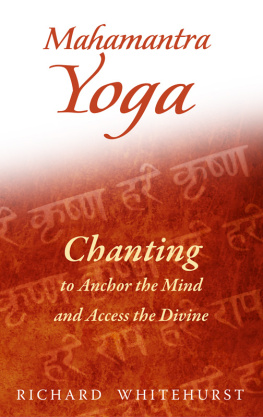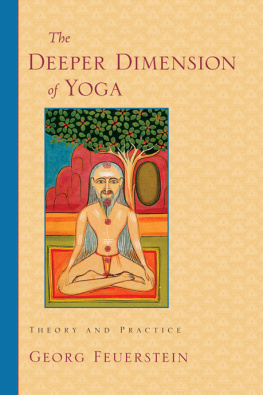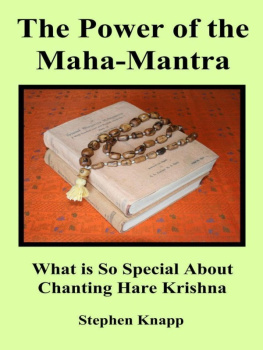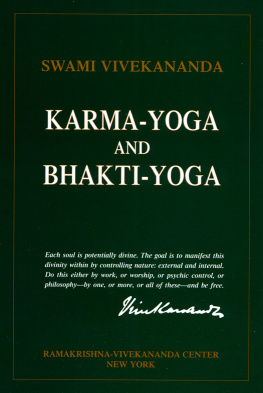Mahamantra
Yoga

Richard Whitehursts Mahamantra Yoga is nothing less than a chalice of pure form that contains the elixir of highest truth. This book is magical, alchemical, and cut like crystal. It is a cleansing waterfall of light, sound, and spiritual resonance.
JAMES ODEA, TEACHER, AUTHOR, VISIONARY ACTIVIST, AND FORMER PRESIDENT OF THE INSTITUTE OF NOETIC SCIENCES
Mahamantra Yoga is spiritually alive. Richard Whitehurst entwines practical guidance with authentic personal expression, thus encouraging the reader to fully embrace his or her humanness in the quest for spiritual enlightenment. This is a book for beginners as well as those who begin every moment anew.
JAMIE K. REASER, PH.D., AUTHOR OF NOTE TO SELF: POEMS FOR CHANGING THE WORLD FROM THE INSIDE OUT
This book is a great companion for those of us on the path of chanting who want to go deeper into this very simple and extremely beneficial way of transformation and healing through the sacred Sanskrit sounds.
DEVA PREMAL AND MITEN, WORLD-RENOWNED MANTRA AND SPIRITUAL SONG ARTISTS
Mahamantra Yogas potent combination of deep learning and profound personal insight sets this book apart. It is not only a valuable resource for students of meditation and mysticism but also an important contribution to contemporary spiritual literature.
STEVEN J. GELBERG, M.T.S., AUTHOR AND EDITOR OF HARE KRISHNA HARE KRISHNA: 5 DISTINGUISHED SCHOLARS ON THE KRISHNA MOVEMENT IN THE WEST AND EDITOR OF SRI NAMAMRTA
Richard Whitehurst creates a bridge for the modern Western reader to a world of wonders, powered by an ancient lineage and presently accessed through a very specific form of chanting. The principles that he so carefully presents alert one to what is needed for any path of inner development.
DAVID TRESEMER, PH.D., AUTHOR OF ONE-TWO-ONE: GUIDEBOOK FORCONSCIOUS PARTNERSHIPS, WEDDINGS, AND REDEDICATION CEREMONIES
Mahamantra
Yoga
Chanting
to Anchor the Mind
and Access the Divine
RICHARD WHITEHURST

Destiny Books
Rochester, Vermont Toronto, Canada
To my dear godbrothers
Visnujana Swami, Aksobhya Dasa, and Aindra Dasa
A Note about the Roman Transliterations of Sanskrit Words
The Sanskrit Devanagari alphabet consists of forty-eight characters: thirty-five consonants and thirteen vowels. The transliterations of the Devanagari script into the Roman alphabet that are given in this book are rough approximations only. It is hoped that this will give the nonspecialist reader an initial sense of the sound of the source materials quoted.
Contents
Foreword
By Edwin Bryant
The centrality of sacred sound is prominent throughout the entire history of Hinduism. From its very earliest origins, where the efficacy of the Vedic sacrifice depended on the perfect recitation of Vedic mantras; through the later Upanisadic period where the absolute Truth, Brahman, is equated with the sacred syllable om; and into later Hinduism where the great transcendent monotheistic deities all manifest their presence in their respective mantras, sound has encapsulated the highest foundational reality in Hinduism. It was thus a delight to encounter Richard Whitehursts Mahamantra Yoga: what better testament to the timeless and transcultural efficacy and potency of sonic Hinduism than the testimony of an American adherent of a transplanted Krishna tradition in the West?
The mahamantra or great mantra, popularized in the West by the eminent Vaishnava teacher Bhaktivedanta Swami, was first propagated as a popular practice by the sixteenth-century Chaitanya, an ecstatic charismatic, considered to be Krishna himself by his followers. Perhaps no other tradition in the history of Hinduism has stressed and exemplified the theology and effects of chanting as much as did Chaitanya and his followers. While Chaitanya himself penned but a few lines, his followers wrote extensive hagiographies, theologies, and philosophical treatises featuring the Holy Name.
Richard Whitehurst has gathered together the more important of these insights and given us a glimpse at the psychological culture and attitudes conducive to successful chanting, which is nothing less than blissful and ecstatic love of God. The book is a wonderful little gemwell written, sophisticated in conceptualization, and spiritually revealing as well as inspiring. As a manual on chanting, the book brings together some of the important prescriptive guiding principles on chanting, written by some of the exemplary individuals in the Chaitanya tradition. Whitehurst thus provides us a very handy synopsis of Nam theology and praxis.
But where Mahamantra Yoga is unique is that it is written from an experiential rather than uniquely scholastic intention that is from an emic or insider rather than from just an academic frame of reference. So, in addition to its role as a prescriptive compilation of classical instructions of chanting technique, a users manual so to speak, Mahamantra Yoga also provides an inspirational first-person narrative of the authors own chanting experiences. Thus, as a biography of sorts, we are afforded an insiders narrative of the practitioners journey, encountering the authors own challenges and struggles over thirty-five years on the path of chanting, as well as a few accounts of the authors periodic successeshis attainment of states beyond the dualities of matter, and his taste, albeit brief, of the eternal, limitless, and blissful potential within the core of all beings. Indian meditation is experientially basedprioritizing direct perceptionand it is important for Westerners to realize that they, too, are not incapable of attaining some of the experiences of which they read.
In this book, Whitehurst convinces us of the wonderful and universally attainable realities of the chanting process and the mercy of the Name. He reveals to us that chanting is a living and accessible process of self-realization accessible to us all even in our consumer-oriented day and age. And what was very welcome from an academics perspective is that scholarly rigor is not sacrificed by this confessional perspective: the writing here is elegant and sophisticated, pointing to the keen penetrating insight of the mystic intellectual.
With kirtan and chanting becoming ever more popular in the Western world, I hope the book finds its way into the greater yoga community: I know no other publication that can serve both as a prescriptive manual of practice grounded in a time-tested Hindu devotional tradition as well as a descriptive record of experience that reflects the possibilities in our own day and age and Western landscape of encountering the bliss that is the most sublime of Divine personalities, Lord Sri Krishna, manifest as sound.
EDWIN BRYANT
Edwin Bryant received his Ph.D. in Indic languages and cultures from Columbia University. He has received numerous awards and fellowships and is the author of several books, including The Yoga Sutras of Patajali: A New Edition, Translation, and Commentary; Krishna: The Beautiful Legend of God; rmad Bhgavata Pur a, Book X; and The Quest for the Origins of Vedic Culture. In 2001 he was appointed associate professor of religion at Rutgers University where he presently teaches Hindu religion and philosophy.
a, Book X; and The Quest for the Origins of Vedic Culture. In 2001 he was appointed associate professor of religion at Rutgers University where he presently teaches Hindu religion and philosophy.
Next page








 a, Book X; and The Quest for the Origins of Vedic Culture. In 2001 he was appointed associate professor of religion at Rutgers University where he presently teaches Hindu religion and philosophy.
a, Book X; and The Quest for the Origins of Vedic Culture. In 2001 he was appointed associate professor of religion at Rutgers University where he presently teaches Hindu religion and philosophy.